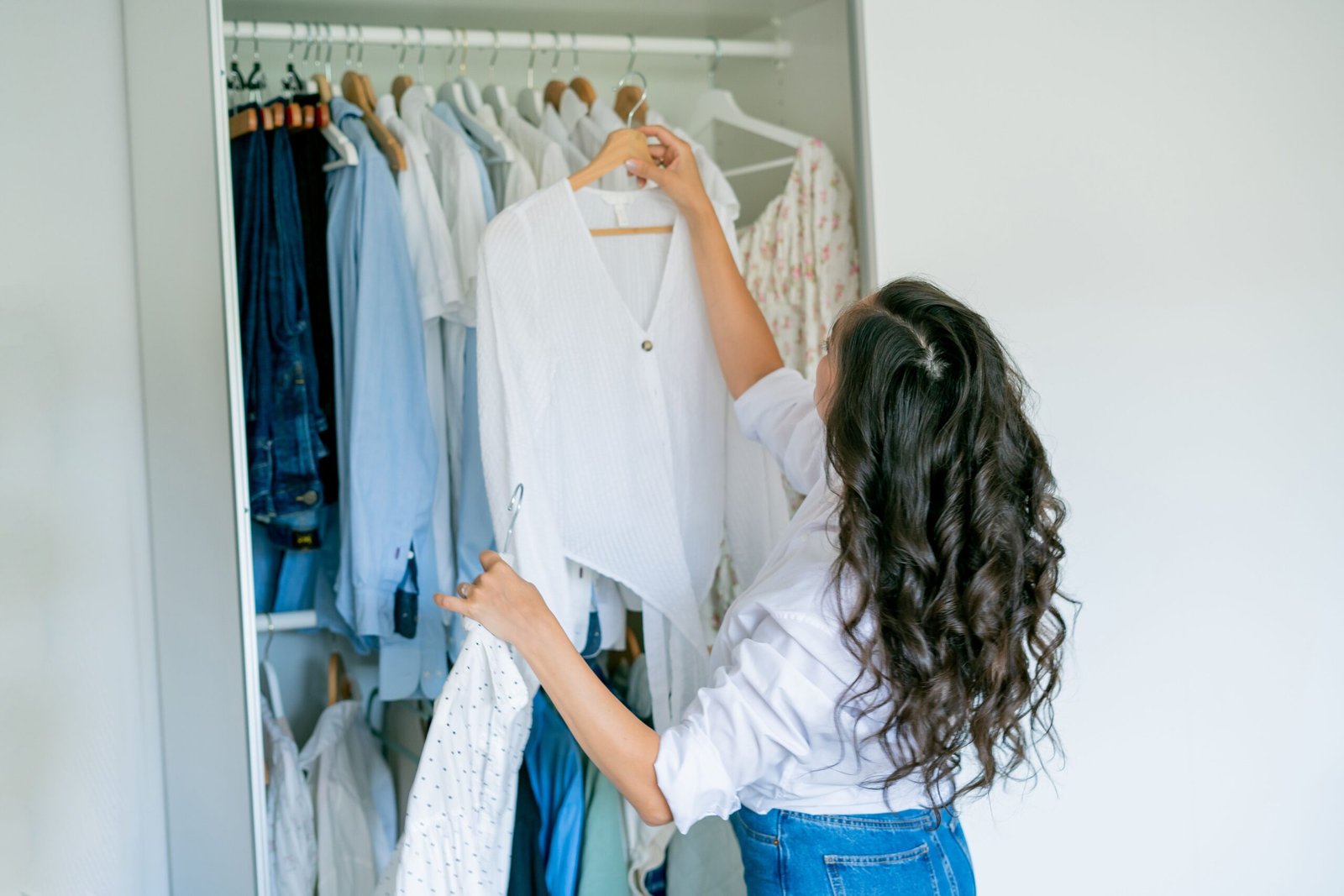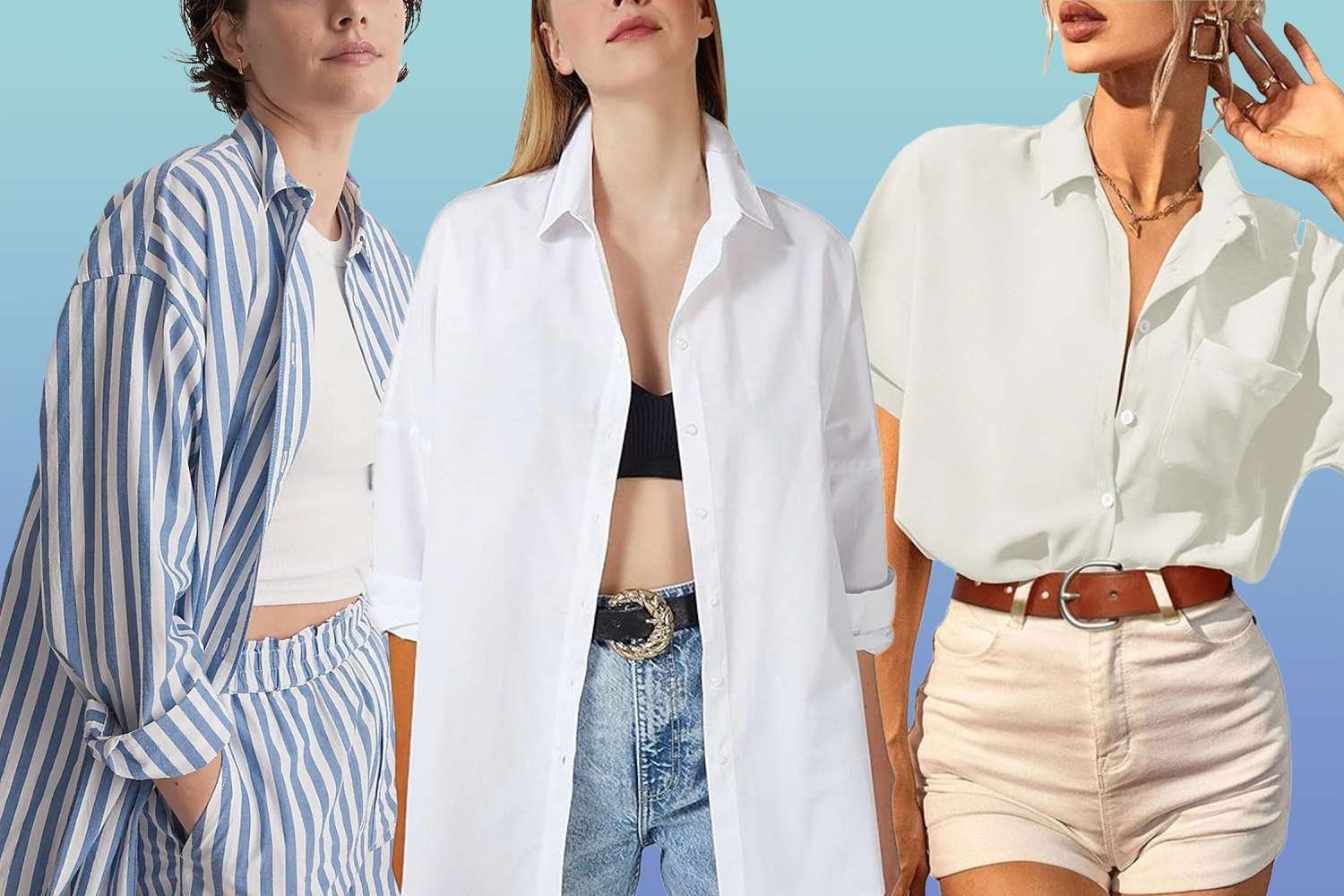Hey there, picture this: It’s 1784, and you’re a young woman in Paris, squeezed into a massive hoop skirt that could double as a hot air balloon basket. You’re dodging puddles just to make it to the market without toppling over. Fast forward a couple centuries, and here I am, in my cozy leggings and oversized sweater, sipping coffee while scrolling vintage fashion plates on my phone. Isn’t it wild how what we wear has mirrored our lives, our freedoms, and even our rebellions? I’ve always been fascinated by this—my grandma used to pull out her old photos from the ’60s, decked in mod minis that screamed “I’m here, world!” It makes you wonder: What story will our outfits tell in 100 years? Let’s dive into the twists and turns of women’s fashion evolution, from ancient drapes to today’s sustainable slips. Trust me, it’s more than hemlines—it’s a timeline of empowerment.
Ancient Roots: Draped in Divinity and Daily Life
Women’s fashion in ancient times wasn’t about runways; it was about survival, status, and a touch of the divine. Think flowing linens in Egypt or pleated chitons in Greece—practical for the heat but elegant enough for goddesses.
In Egypt around 3000 BCE, noblewomen like Cleopatra rocked sheer kalasiris tunics adorned with gold beads, symbolizing power and allure. Meanwhile, everyday folks stuck to simple linen wraps for farm work. It’s like fashion’s first class divide: bling for the elite, basics for the rest. I once tried wrapping a bedsheet like that for a costume party—total fail, but it gave me mad respect for ancient multitasking.
Egyptian Elegance: Linen and Legacy
Cleopatra’s wardrobe was pure opulence, with pleated linens dyed in rare hues and jeweled collars that screamed royalty. These weren’t just clothes; they were political statements, blending beauty with authority.
Historians note how these garments allowed freedom of movement, a far cry from later constrictions. Fun fact: The fabric’s breathability influenced modern summer staples like maxi dresses. Where to snag a modern twist? Check out ASOS’s ancient-inspired linens for affordable vibes.
Greek Grace: Chitons and Chiton-isms
The chiton, a simple T-shaped drape pinned at the shoulders, defined Greek women’s style from 800 BCE. It was unisex but tailored for women with added belts for that hourglass hint.
This era birthed the idea of “flowy yet fitted,” echoing in today’s wrap styles. Emotional pull? It reminds me of beach days as a kid, feeling weightless in a sundress—pure joy.
Medieval Layers: Status, Survival, and a Side of Silk
Fast-forward to the Middle Ages, where fashion got layered like an onion—practical for cold castles but symbolic of social ladders. Women’s attire screamed “who you were” more than “how you felt.”
From 500-1500 CE, noblewomen piled on kirtles, surcoats, and veils in rich velvets, while peasants mended woolen smocks. Corsets emerged here, hinting at the body-shaping saga ahead. My great-aunt’s tales of wartime mending? Echoes of this resourceful era.
The Rise of the Corset: Constriction or Confidence?
By the 1100s, laced bodices cinched waists to 20 inches—ouch! It was about projecting poise, but doctors later decried the organ-squishing.
Pros: Instant posture boost. Cons: Fainting spells at balls. Modern echo? Waist trainers, but please, skip ’em—your ribs thank you.
| Era Feature | Pros | Cons |
|---|---|---|
| Medieval Corset | Enhanced silhouette; social status symbol | Restricted breathing; health risks like rib deformation |
| Modern Shapewear | Subtle support; confidence in outfits | Discomfort if overused; body image pressure |
Peasant Practicality: Wool and Wit
Working women in simple shifts and aprons prioritized durability over dazzle, often dyeing fabrics with local plants for color pops.
This grounded style influenced folk fashion revivals. Relatable? Like my thrift-store finds—affordable, enduring, and full of stories.
Renaissance Opulence: Artistry in Every Fold
The Renaissance (1400-1600) turned fashion into a canvas, with Italian and French courts leading the charge in sumptuous silks and slashed sleeves.
Women’s farthingales—hoop undergarments—created dramatic skirts, while low necklines flirted with scandal. It was the era of excess, mirroring art’s bloom. I visited Florence once and felt like a time-traveler in a velvet gown replica—pure magic, minus the itch.
Farthingales and Flair: The Skirt Revolution
These cage-like hoops ballooned skirts to room-clearing widths, a status flex for the wealthy.
They paved the way for structured silhouettes. Best tool for recreating? Etsy patterns for DIY history buffs—transactional gold!
Velvet and Virtue: Fabrics of the Elite
Velvet gowns embroidered with gold threads were de rigueur, sourced from trade routes.
Humor alert: One wrong candle, and poof—your fortune up in flames. Today’s velvet? Velvet blazers from Zara—elevated everyday.
Baroque Extravagance: Powders, Panniers, and Power Plays
Baroque fashion (1600-1750) was Versailles on steroids—think Marie Antoinette’s poufy panniers that needed sidekicks to navigate doors.
Women’s mantuas, loose robes over stays, blended comfort with grandeur. It was theatrical, reflecting absolute monarchies. My attempt at a powdered wig for Halloween? Epic, if sweaty, fail.
Panniers: Widening Horizons (Literally)
These side hoops expanded skirts to five feet wide, a “don’t touch me” vibe for nobility.
Influenced modern A-line skirts. Pro tip: For wide-leg pants inspo, hit Reformation’s site.
Rococo Romp: Pastels and Playfulness
Rococo’s soft pinks and ruffles softened Baroque’s edges, with robe à la française as the star.
It was flirtatious fun—until the Revolution crashed the party. Emotional nod: Like slipping into a favorite sundress on a spring day.
Georgian Simplicity: A Breath of Fresh Empire Air
The 1700s Georgian era (1714-1830) shifted to neoclassical vibes, with high-waisted empire dresses ditching hoops for fluidity.
Inspired by Pompeii digs, these muslin gowns let women move freely—hello, dancing without drama. Jane Austen’s heroines nailed this look; I binge-watched Pride and Prejudice and craved one.
Empire Waist: Liberation in Linen
Waists under the bust created ethereal lines, freeing torsos from stays.
This democratized fashion somewhat. Where to get? Anthropologie’s boho empires—timeless buys.
Neoclassical Nods: Grecian Revival
Draped shawls and sandals evoked ancient ideals of beauty.
It empowered women visually. Light humor: No more “bustle butt”—progress!
Victorian Restraint: Bustles, Brocades, and Bold Morals
Victorian fashion (1837-1901) was prim on the surface but seethed with change underneath—corsets tighter, skirts fuller.
Queen Victoria’s influence brought mourning blacks and day gowns, but underneath? Rational dress reformers fought back. My Victorian ghost tour in London? Chills, corsets, and corset regrets.
The Bustle Era: Back in Action
Bustles puffed rears for that S-curve, peaking in the 1880s.
Pros: Balanced proportions. Cons: Tripping hazards. Comparison: Vs. modern peplums—subtler sass.
- Victorian Bustle: Exaggerated, heavy (up to 10 lbs).
- Modern Peplum: Light, flattering, office-friendly.
Rational Dress Rebellion: Pants for Progress
Amelia Bloomer’s trousers challenged norms in the 1850s, tied to suffrage.
It sparked athletic wear. Best tools? Patagonia’s active lines—empowerment 2.0.
Edwardian Elegance: S-Bends and Soft Shoulders
The early 1900s Edwardian era softened lines with pigeon-breast corsets and tea gowns.
It was a brief gasp of grace before WWI utility. Tea parties in lace? Sounds dreamy, until the laundry.
Gibson Girl Glam: Icons of the Age
Illustrator Charles Dana Gibson’s ideal—S-corseted, shirtwaisted—defined aspiration.
Echoes in today’s boss babe fits. Navigational: Vintage shops like Etsy for repros.
Roaring Twenties: Flappers and Freedom
The 1920s exploded with flapper frocks—knee-length, beaded, boyish.
Post-WWI liberation meant dropped waists and cloche hats. My grandma’s jazz stories? Dresses that danced.
The Little Black Dress: Chanel’s Game-Changer
Coco Chanel’s LBD in 1926? Timeless rebellion in jersey knit.
It freed women from frills. Iconic? Absolutely. Shop modern: Chanel’s site, or dupes at H&M.
Art Deco Influence: Geometric Glam
Beading and fringe captured Deco dazzle, influencing Gatsby vibes.
Pros: Party-ready. Cons: Snag city. Emotional: That thrill of a night out.
Thirties and Forties: Utility and Understated Chic
The 1930s bias-cut gowns slinked like liquid silk; 1940s wartime squared shoulders for strength.
Austerity birthed clever hacks. WWII photos of Rosie the Riveter? Power in pants.
Bias-Cut Bias: Vionnet’s Vision
Madeleine Vionnet’s cuts hugged curves fluidly from 1930.
Revolutionized draping. Where? Net-a-Porter’s bias slips.
Wartime Wardrobes: Square and Strong
Utility suits with padded shoulders echoed factory fortitude.
It normalized workwear. Humor: Who knew rations could look this good?
Fifties Femininity: New Look and Naughty-Nice
Christian Dior’s 1947 New Look—full skirts, nipped waists—rebounded post-war.
Housewife chic met Hollywood glamour. Mad Men binges make me crave crinolines.
Dior’s Hourglass: Post-War Pinch
Cinched waists on taffeta? Feminine fantasy.
But corsets lingered. Comparison:
| 1950s New Look | Pros | Cons |
|---|---|---|
| Full skirts | Twirl factor high | Fabric hog |
| Modern Midi | Versatile | Less drama |
Rockabilly Rebellion: Leather and Lipstick
Grease-era rebels added edge with capri pants.
Influenced pin-up revivals. Transactional: Unique Vintage for retro kits.
Sixties Swings: Mod, Mini, and Mayhem
The 1960s miniskirt by Mary Quant liberated legs; mod geometrics clashed with hippie florals.
Youthquake shook norms. Twiggy’s pixie? Iconic awkward-cool.
The Mini Revolution: Quant’s Quill
Knee-abovers in 1965? Scandal to staple.
Empowered mobility. Best for: ASOS minis—endless options.
Hippie Haven: Psychedelic Peace
Tie-dye and bell-bottoms preached free love.
Emotional: Woodstock vibes—pure, flower-powered bliss.
Seventies Disco: Boogie in Bell-Bottoms
Disco’s hot pants and platforms pulsed; boho maxis flowed.
Studio 54 nights? Sweat and sparkle.
Wrap Dresses: Diane von Furstenberg Magic
DVF’s 1974 wrap? Flattering for all.
Still sells out. Pro/con: Versatile vs. tie mishaps.
Eighties Power: Shoulders and Statements
Big hair, bigger pads—power suits ruled.
Wall Street women meant business. Flashdance leotards? Fitness fashion’s birth.
Shoulder Pad Saga: Dynasty Drama
Dynasty-level pads screamed authority.
Humor: They could’ve doubled as airbags. Modern: Subtle blazers from Theory.
Neon Nights: Fitness to Runway
Leg warmers met spandex—athleisure’s grandma.
Influenced gym glam. Where? Lululemon for polished.
Nineties Grunge: Slip Dresses and Slackers
Grunge flannels over slips; minimalism reigned.
Kate Moss’s heroin chic? Edgy, if controversial.
Minimalist Muse: Calvin Klein Clean
Slip dresses in white cotton—understated sex.
Echoes in today’s basics. Nav: Everlane’s slips.
Girl Power: Spice and Street
Buffalo platforms met sporty spice.
Empowering anthems in outfits. Relatable: My ’90s phase—baggy jeans forever.
Aughts Excess: Low-Rise and Logo Mania
Y2K bling, trucker hats, velour tracksuits.
Paris Hilton’s low-rises? Belly-button bravado.
Athleisure Antecedent: Juicy Couture Jump
Sweats as status? Juicy nailed it.
Pros: Comfy luxe. Cons: Sweatpant sag.
2010s Influence: Athleisure and Activism
Leggings everywhere; influencers ruled.
MeToo pink pussyhats? Fashion fought back.
Streetwear Surge: Off-White and OGs
Virgil Abloh blended hype with high fashion.
For women: Oversized tees. Shop: SSENSE.
Sustainable Shift: Eco Warriors
Stella McCartney’s no-leather? Pioneering green.
Emotional: Hope in hemp—future feels good.
2020s Remix: Retro, Resilient, Ready
Post-pandemic: Wide-legs, quiet luxury, Y2K revivals.
2025 trends? Boho lace, purple pops, suede sets. My closet’s evolving—vintage meets vegan leather.
Boho 2.0: Flowy and Feminist
Chloé’s romantic ruffles for 2025.
Mix with jeans for edge. Best tools: Reformation’s boho.
Aquatic Allure: Mermaid Modern
Sheer scales and sea blues trending.
Inspired ancients. Humor: No fins required.
Influential Designers: The Women Who Wore the Crown
Behind every shift? Visionary women like Chanel (LBD liberator) and McCartney (sustainable siren).
They didn’t just design—they disrupted.
- Coco Chanel: Freed from corsets; timeless tweed.
- Madeleine Vionnet: Bias-cut bias.
- Vivienne Westwood: Punk power.
- Rei Kawakubo: Avant-garde armor.
Pros of their legacies: Endless inspiration. Cons: Knockoff overload.
| Designer | Key Innovation | Impact |
|---|---|---|
| Chanel | Jersey knits | Casual couture |
| DVF | Wrap dress | Body positivity |
| McCartney | Vegan materials | Eco-fashion |
Personal story: Borrowing my mom’s DVF wrap? Instant confidence boost—like wearing a hug.
People Also Ask: Your Burning Questions Answered
Ever Googled “evolution of women’s fashion” and hit that PAA goldmine? Here are real ones, straight from the search ether.
How has women’s fashion evolved over the last few decades?
From ’80s power pads to 2010s athleisure, it’s gone minimal-maximal. 2020s? Sustainable boho with a tech twist—think recycled ruffles.
What was women’s fashion like in the 1920s?
Flapper frocks, dropped waists, and bobbed hair—pure post-war party mode, thanks to Chanel and jazz.
How did World War II change women’s fashion?
Utility fabrics, squared shoulders for factory work; it birthed practical pants and ended extravagance.
What ancient women’s fashion inspired modern trends?
Grecian drapes fuel today’s flowy maxis; Egyptian gold echoes in bold accessories.
FAQ: Fashion History Unraveled
Got queries? I’ve got answers, pulled from deep dives and dress-up disasters.
What is the most iconic piece in women’s fashion history?
The little black dress—Coco’s 1926 staple. Versatile, eternal. Why? It flatters everyone, from flappers to feminists.
Where can I find authentic vintage women’s clothing?
Thrift apps like Depop or sites like 1stDibs for high-end. Start local—flea markets hide gems.
How has technology influenced women’s fashion evolution?
From sewing machines in the 1800s speeding production to 3D printing custom fits today—faster, fairer, fabulous.
What are the best sustainable fashion brands for modern women?
Patagonia for activewear, Everlane for basics. Pro: Planet-friendly. Con: Pricey, but worth it.
How do I style historical trends for today?
Mix Regency sleeves with jeans or Victorian collars with tees—edgy, wearable history.
Whew, what a whirlwind through wardrobes past. From corseted constraints to crop-top conquests, women’s fashion has been our mirror—and megaphone. It’s not just cloth; it’s courage, creativity, the quiet click of a zipper sealing a statement. As we eye 2025’s suede surges and siren sheens, remember: Your style? It’s your story in stitches. What’s your favorite era? Drop it below—I’d love to hear. Until next time, dress like the legend you are.



